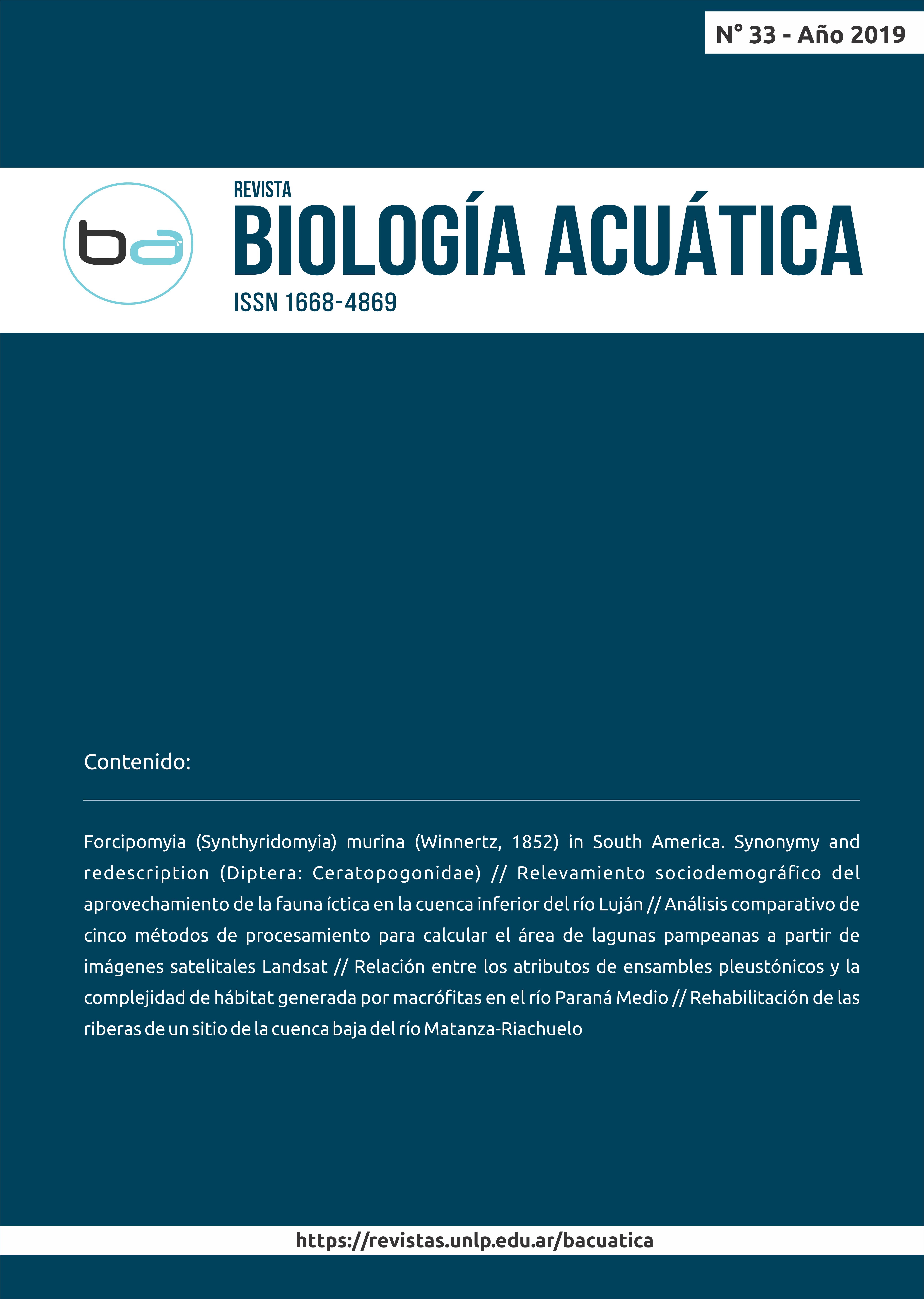Rehabilitación de las riberas de un sitio de la cuenca baja del río Matanza-Riachuelo
DOI:
https://doi.org/10.24215/16684869e005Keywords:
Heavy metals, helophytes, prevegetated rolls, sedimentsAbstract
Riparian vegetation plays an important role in the control of non-point sources of pollution and the improvement of the water quality of rivers and streams. The Matanza-Riachuelo River has been classified as one of the most polluted in the world, according to high levels of metals and other pollutants in the water column and in the sediments of its banks. The objective of this work was to carry out a physical, chemical and floristic characterization and to test an intervention for ecological rehabilitation in a riparian pilot area of the Matanza-Riachuelo River. Chromium, cadmium, nickel, zinc, copper and lead were determined in sediment and samples of the herbaceous: Sagittaria montevidensis and Tradescantia fluminensis. Both herbaceous plants tolerate the variation of water level and accumulate metals, mainly in their underground structures. These characteristics indicate that S. montevidensis and T. fluminensis could be used in the rehabilitation of banks. The rehabilitation consisted in the direct planting of 45 specimens of native trees and shrubs tolerant to environmental stress (Erythrina crista-galli, Senna corymbosa, Solanum granulosum-leprosum, Allophylus edulis, Syagrus romanzoffiana, Salix humboldtiana, Lantana camara, Cestrum parqui y Sesbania punicea), in the coastal line were installed 66 prevegetated rolls for the implantation of the native helophytes: Hydrocotyle bonariensis, Tripogandra diuretica, T. fluminensis, Schoenoplectus californicus, S. montevidensis y Echinodorus grandiflorus. The subsequent monitoring showed that the trees and shrubs tolerated both the levels of soil contamination and the prolonged period of flooding. The implantation of macrophytes (S. californicus, S. montevidensis y E. grandiflorus) by the technique of prevegetated rolls proved to be a good alternative, but the helophytes: H. bonariensis, T. fluminensis y T. diuretica were affected mainly by depositing floating debris.





















